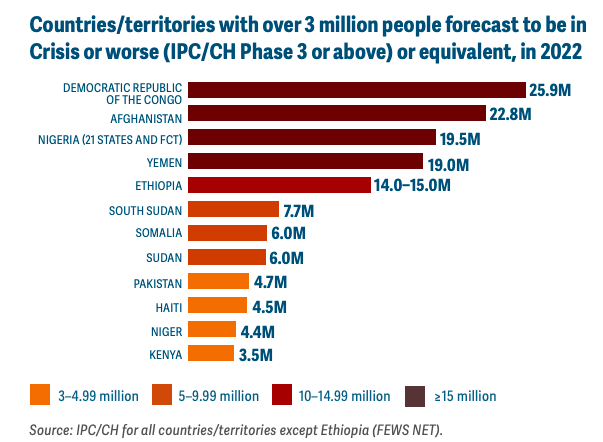
Food Crisis – Know the Key Findings
Read more
The sixth annual Global Report on Food Crises (GRFC 2022) was released by Global Network Against Food Crises (GNAFC).
GNAFC was founded by the European Union, FAO, and World Food Programme (WFP) at the 2016 World Humanitarian Summit to prevent, prepare for, and respond to food crises and support Sustainable Development Goal to End Hunger (SDG 2).
Key Findings
- Globally, levels of hunger remain alarmingly high.
- The United Nations defines “acute food insecurity” as the inability of a person to consume adequate food, putting their lives or livelihoods in immediate danger.
- It is hunger that can lead to famine and widespread death.
- Three main drivers for food insecurity are prolonged or intensifying conflict, pre-existing and COVID-19-related economic shocks, weather extremes, or a combination of these factors.
- Grim outlook for 2022 as acute food insecurity is expected to deteriorate further due to the Russia-Ukraine war and its impact on global food, energy, and fertilizer prices and supplies.
- In 2022, between 179 and 181.1 million people in 41 out of the 53 countries/territories were projected to be in Crisis or worse (IPC/CH Phase 3 or above).





Recommendation
- Where food availability is limited due to reduced imports and food access is curtailed by higher prices, with further reduced humanitarian food assistance, there is a need to provide support to farmers to raise their productivity and improve their access to markets.
- We need to achieve food security and improved nutrition. This involves working at the global, regional, and national levels.
Source: FAO